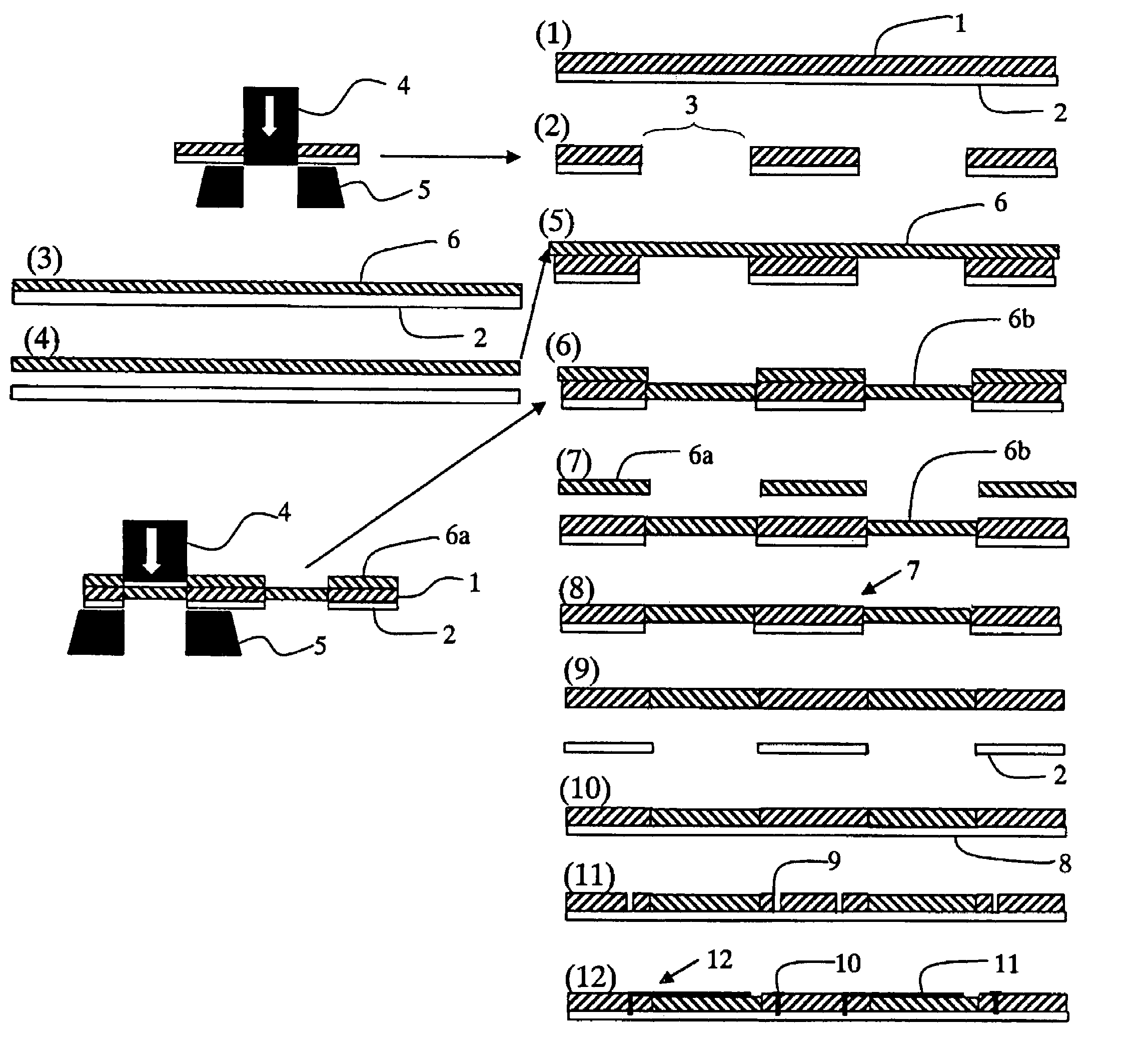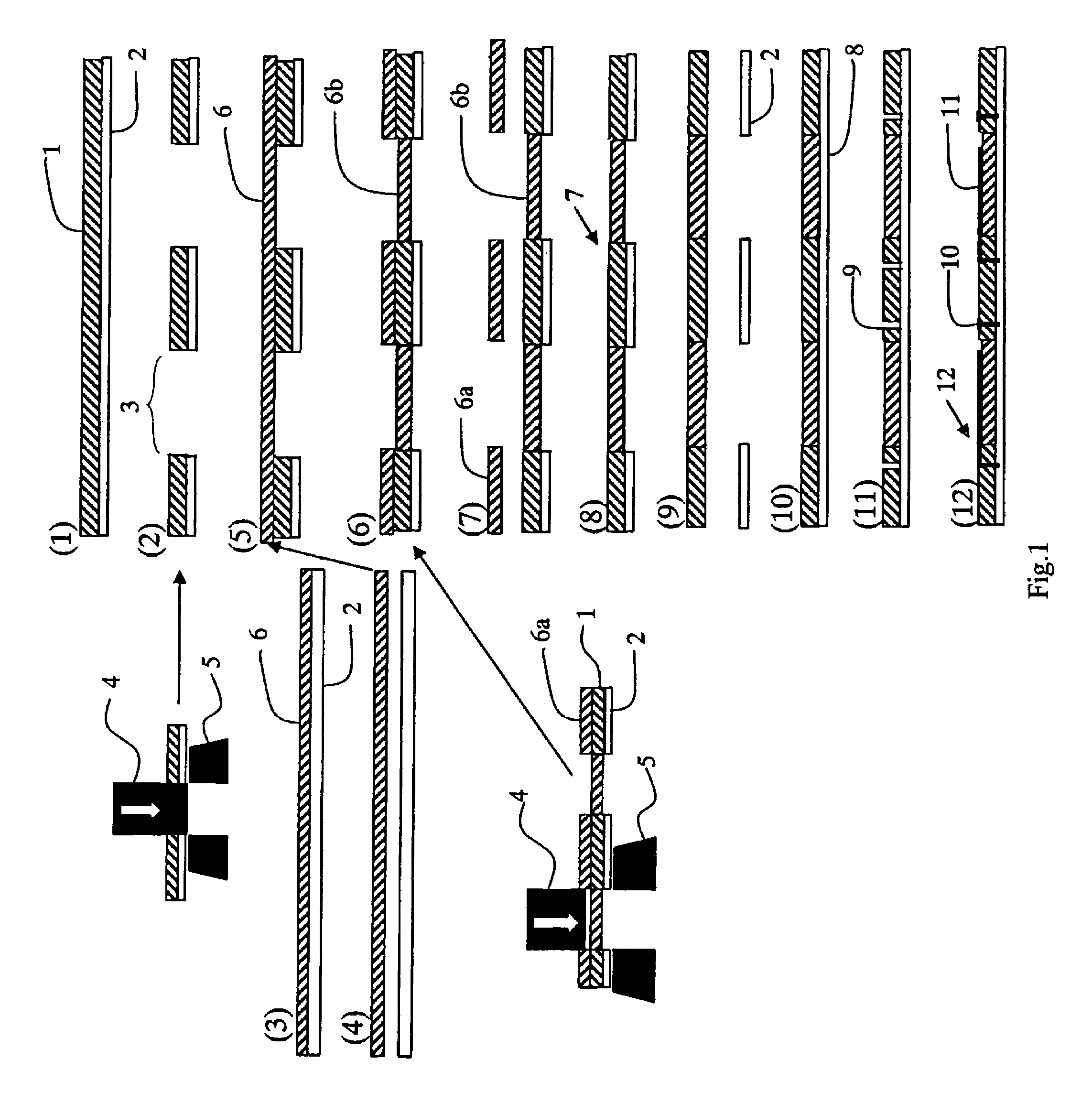Production method for a multilayer ceramic substrate
a production method and ceramic substrate technology, applied in the direction of solid-state devices, electrical devices, metal-patterned materials, etc., can solve the problems of low degree of flexibility in design, difficult to put molded body blocks into the spaces in the laminated body with high accuracy, and occurrence of separation between the substrates. , the effect of increasing the degree of flexibility in circuit design
- Summary
- Abstract
- Description
- Claims
- Application Information
AI Technical Summary
Benefits of technology
Problems solved by technology
Method used
Image
Examples
example 1
[0058]A multilayer ceramic substrate having a capacitor element shown in FIG. 3 was formed, and capacitance and IR were measured. A fired layer 21 of the first green sheet was made to have a composition (SiO2—B2O3—Al2O3—MgO—CaO—SrO) whose dielectric constant ε was 7.3 after firing. A fired layer 22 of the second green sheet was made to have a composition (SiO2—Al2O3—La2O3—B2O3—BaO—TiO2—Bi2O3—Nd2O3—SrO) whose dielectric constant e was 21.1 after firing. The size after firing of the second green sheet inserted in the first green sheet was made 2.57 mm×2.57 mm×40 μm. The size of an internal electrode was 2.13 mm×2.13 mm. An external electrode is denoted by a reference numeral 23. This was Example 1.
example 2
[0059]Similarly, the fired layer 21 of the first green sheet was made to have a composition (BaO—Al2O3—SiO2—B2O3) whose dielectric constant ε was 5.9 after firing. The fired layer 22 of the second green sheet was made to have a composition (BaO—Nd2O3—TiO2—B2O3—CaO—ZnO) whose dielectric constant ε was 72.3 after firing. The size after firing of the second green sheet 22 inserted in the first green sheet 21 was made 2.57 mm×2.57 mm×40 μm. The size of the internal electrode was made 1.71 mm×1.71 mm. This was Example 2.
[0060]The relationship between capacitor capacity and insulation resistance of Example 1, which was measured under conditions that a frequency for capacity measurement was 1 kHz and a voltage for IR measurement was 10 V, is shown in FIG. 4. The relationship between capacitor capacity and insulation resistance of Example 2, which was measured under conditions that a frequency for capacity measurement was 1 kHz and a voltage for IR measurement was 10 V, is shown in FIG. 5. ...
PUM
| Property | Measurement | Unit |
|---|---|---|
| time | aaaaa | aaaaa |
| heating temperature | aaaaa | aaaaa |
| pressing pressure | aaaaa | aaaaa |
Abstract
Description
Claims
Application Information
 Login to View More
Login to View More - R&D
- Intellectual Property
- Life Sciences
- Materials
- Tech Scout
- Unparalleled Data Quality
- Higher Quality Content
- 60% Fewer Hallucinations
Browse by: Latest US Patents, China's latest patents, Technical Efficacy Thesaurus, Application Domain, Technology Topic, Popular Technical Reports.
© 2025 PatSnap. All rights reserved.Legal|Privacy policy|Modern Slavery Act Transparency Statement|Sitemap|About US| Contact US: help@patsnap.com



